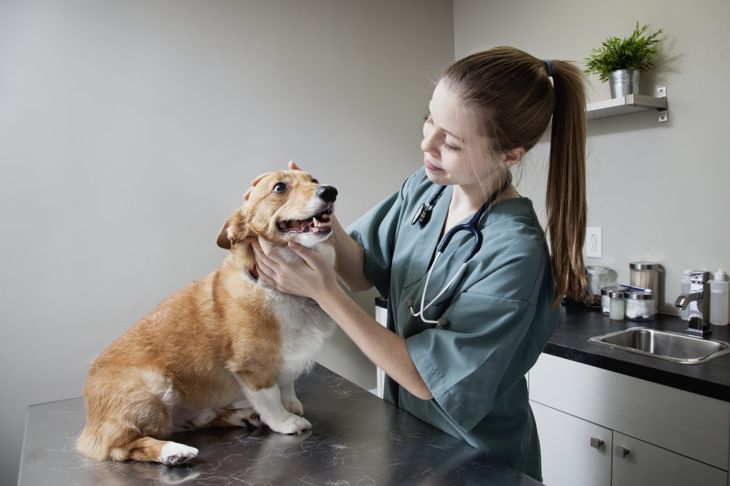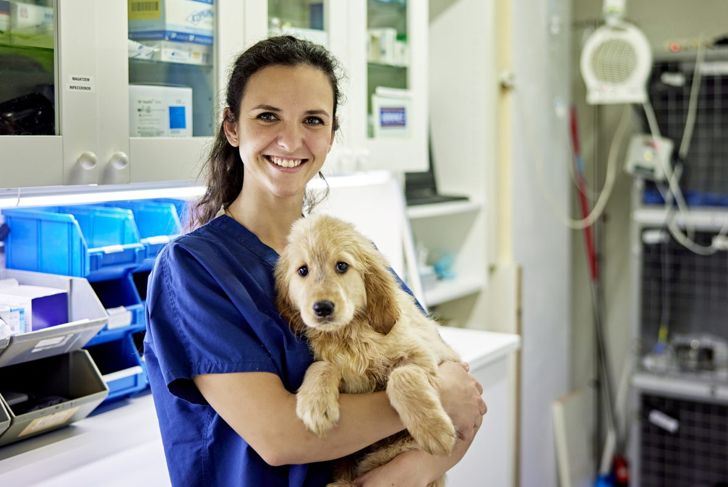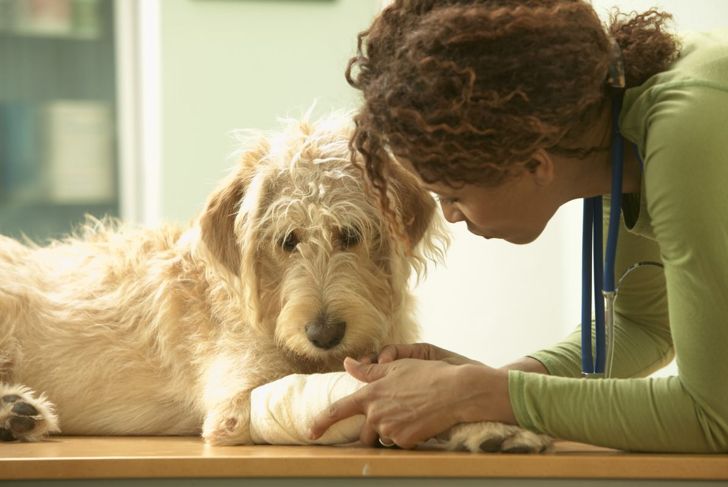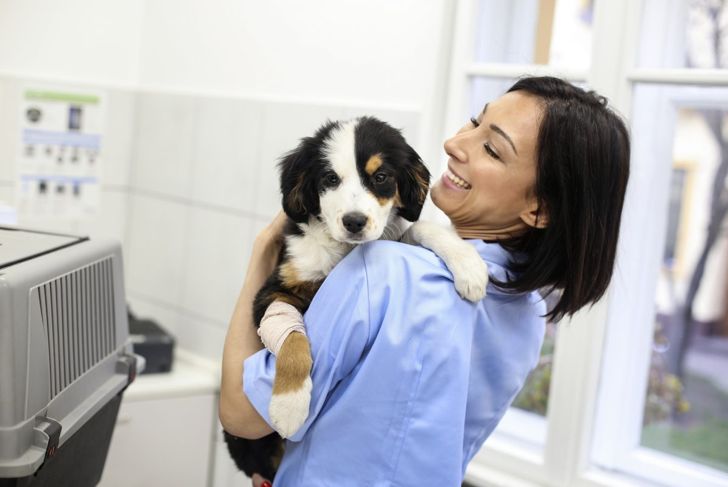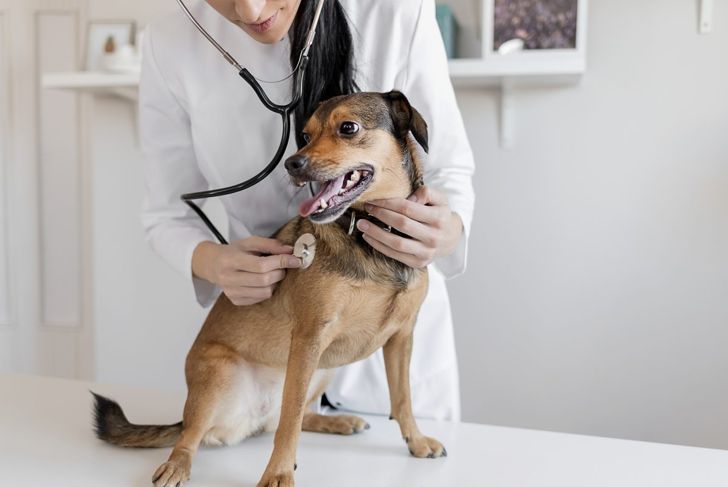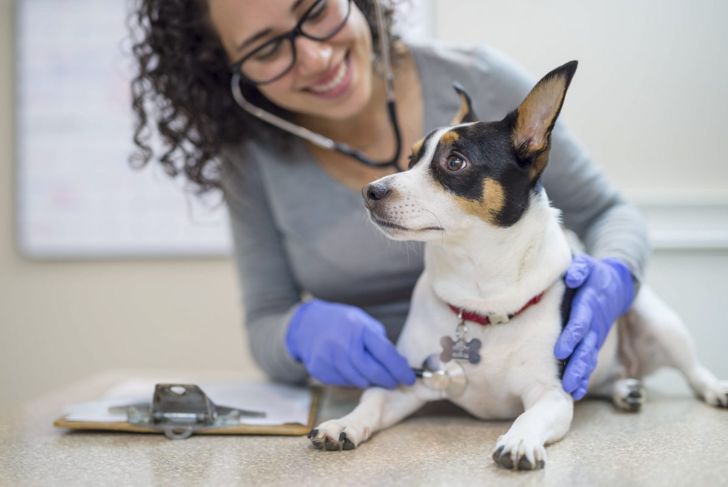Pyoderma in dogs is a skin infection with itchiness and pus-filled bumps on the skin. If you’ve ever had even a mild reaction to poison ivy, you know how intensely itchy that can be. Pyoderma in dogs is somewhat similar, except bacteria usually cause it. Besides itching and bumps, pyoderma can cause hair loss and flaky lesions. It’s a miserable condition for the suffering dog, so getting your best friend treated by a vet ASAP is important.
What is pyometra?
Pyometra results from infection of the uterus that increases the volume of the organs. An infected uterus may become blocked with some of its own tissue and may also cause the uterus lining to separate and bleed into the abdominal cavity. Other signs of this condition include thirst, restlessness, and loss of appetite. Pyometra can be caused by bacteria that are transmitted to the uterus during heat.
Pyometra mostly affects unspayed female dogs
Pyometra usually occurs in unspayed female dogs that have entered heat (estrus). It’s more common in older and large breed dogs, but the infection can occur at any age. Pyometra is most often described as a condition affecting older, large breed dogs. However, it can occur in young dogs and spayed female dogs as well. Pyometra can also appear in unspayed female dogs that have been spayed at a young age. In some cases, pyometra is linked to other conditions like endometritis or cystic ovarian hyperplasia that results from hormonal changes or disease of the reproductive tract.
Most common after heat
Pyometra usually occurs after the heat cycle, when there is an abundance of bacteria and debris which has accumulated over the course of the season. This is when a uterine infection is most likely to occur. Pyometra usually presents itself with symptoms if the infection becomes severe enough to cause damage to the uterus. However, this may take a few weeks or months.
Causes of pyometra
Pyometra is caused by bacteria that live in the female dog’s reproductive tract. At certain times, hormonal changes allow these bacteria to multiply and infect the uterus. When the reproductive tract is intact, there is a barrier between the vagina and the uterus. This barrier prevents bacteria from reaching the uterus unless they are carried through the cervix through heat or an infection. Bacterial vaginosis is a type of bacterial infection that can occur in the reproductive tract. It doesn’t cause pyometra, but it can result in irregular heat cycles.
How pyometra happens
Pyometra begins with an infection, usually of the uterus. The body starts to fight it off, becoming a battle between the immune system and the infection. Different types of bacteria live in the reproductive tract, and some can cause infection. The infection that leads to pyometra happens when a dog enters heat, which happens periodically over the course of a year. In most cases, there are only mild symptoms or no symptoms at all. This is because the body’s immune system does its job and kicks out the infection.
Signs of pyometra
It is usually not possible to see pyometra before the early stages of the disease. For example, there might be a mild fluid accumulation in the abdomen, but it is difficult to tell if this is related to pyometra or another condition. Most dogs showing signs of pyometra have an abnormal discharge from the vulva. The discharge will often have a strong odor that can be described as foul or metallic. It may also contain pus. Your dog might also become lethargic.
Treatment for pyometra
The treatment of pyometra depends on the severity of the condition. If your dog is lethargic, has a high temperature, or has excessive discomfort, there may be more serious involvement with pyometra. This is when intravenous fluids are necessary to support the dog. Pain management is also important, and you should seek veterinary help if your dog doesn’t want to eat or drink. In some cases, antibiotics and pain relievers may be needed to control the pain. Sometimes surgical intervention is necessary. The most common type of surgery for pyometra involves removing the uterus.
Closed vs. open pyometra
Pyometra can be closed or open. Open pyometra is when the cervix is open, and the pus can escape through the dog’s vagina. Closed pyometra is when the cervix is closed, and the pus can’t escape. Severe open pyometra can lead to shock or death. If you suspect that your dog might have pyometra, various tests can be used to confirm the diagnosis. One of the most common tests is an abdominal ultrasound. This is a simple procedure performed by a vet that allows visualization of the reproductive tract and determines whether there are any disturbances or blockages.
How vets diagnose pyometra
Veterinarians will take a medical and reproductive history, perform a physical examination, and order diagnostic tests. Often bloodwork, x-rays, and abdominal ultrasound are performed. Dogs with other diseases that cause abdominal pain or certain types of cancer can have similar symptoms to pyometra. Diseases that affect the liver might also be suspected, so the veterinarian may check for those as well. If pyometra is mild, then antibiotics and fluids may be enough to treat it. If it’s severe, then surgery may be necessary to remove the uterus and surrounding tissues.
How to prevent pyometra
There is a way to prevent pyometra. It involves having your dog spayed. Spaying is a surgery that removes your dog’s reproductive organs. It also prevents your dog from becoming pregnant. During any heat cycle, your dog will experience changes in hormones. These changes stimulate the reproductive tract to release eggs and also attract male dogs. Once eggs are released, sperm can fertilize them, and pregnancy can occur. However, if your dog has been spayed, then she can’t have pups. Pyometra can’t occur when your dog has been spayed because the uterus is no longer there.

 Home
Home Health
Health Diet & Nutrition
Diet & Nutrition Living Well
Living Well More
More